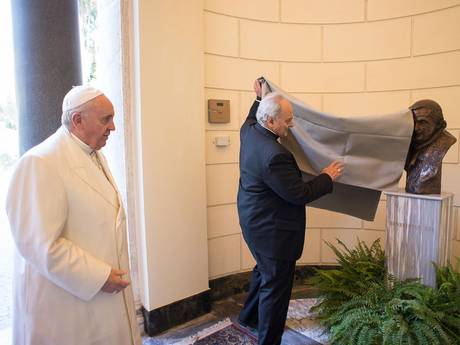
Nicholas Walton
October 29, 2014
Pope Francis declares evolution and Big Bang theory are real and God isn’t ‘a …
October 29, 2014Physicist Paul Kunz installed the first web server outside of Europe at SLAC, with the first SLAC websites added between Dec. 6 and Dec. 12, 1991.
Some of the earliest pages from the World Wide Web have been restored and are once again browsable, providing a glimpse of how the web once operated. Stanford Libraries has made these pages available with Stanford Wayback, a customized version of an open source platform that enables long-term access to archived web assets.
The first website featured in Stanford Wayback is the SLAC National Accelerator Laboratory site. Originally created in 1991, the SLAC site is the earliest known website in the United States.
“Thankfully, a handful of staff at SLAC who worked on the early web fortuitously saved the files, along with their timestamps, associated with the first and several subsequent versions of their website,” said Nicholas Taylor, web archiving service manager for Stanford Libraries.
A website is born
Tim Berners-Lee was a fellow at CERN, the European particle physics laboratory, in 1989 when he developed the idea for the World Wide Web – a global network of browsable, hyperlinked documents containing multimedia content.
“I first saw a demonstration of the web at a conference in Southern France in 1991,” recalled Tony Johnson, a SLAC physicist and one of the lab’s web pioneers. “I immediately thought that it would be a great way of sharing information on the Internet.”
This meeting inspired physicist Paul Kunz to install the first web server outside of Europe at SLAC, with the first SLAC websites added between Dec. 6 and Dec. 12, 1991.
Stanford Wayback brings those original websites back to life as well as thousands of historical SLAC web pages and related web assets from 1991-1999. Access to early websites provides users with a snapshot of the web’s evolution. “The early pages of the web may seem rudimentary and visually dull to today’s user; however, they offer great insight into web history, functionality, changes and trends,” Taylor said.
The Libraries chose to release the SLAC sites to coincide with the yearlong celebration of the web’s 25th anniversary. Other web archives captured by the Libraries will be uploaded into Stanford Wayback in phases.
Preserving at-risk content
The release of Stanford Wayback is part of the Libraries’ web archiving initiative, which aims to collect, preserve and provide access to web content that is at risk of being updated, replaced or lost. Subject specialists have been actively capturing websites, as well as social media pages, that have significant research and teaching value, including topical collections in government documents, African politics, Middle East politics, digital games and virtual worlds.
Stanford Libraries joins an international community of web archiving organizations and is actively collaborating to deepen the informational resources available for scholarship. Currently, the Libraries, Archive-It, and the Institute for Research in the Social Sciences (IRiSS) are creating a comprehensive and longitudinal archive of all 2014 congressional primary and general election candidate websites.
Congressional campaign websites are valuable primary source material for historians, social scientists and the public to better understand the evolution of political communication in the web era. However, by nature, these sites are time-limited and therefore the content is at risk of disappearing.
Participating researchers from Stanford and University of California, Berkeley will investigate the datasets for key findings, like the correlations between location of campaign stops and demographics of voter turnout.
Stanford Libraries considers web archiving a component of a broader collections development plan and is creating web archives to complement existing and prospective collections.
To improve possibilities for discovery of websites and other web-based content in the Stanford Wayback collections, the Libraries are adding its web archives to the Stanford online catalog. Once complete, queries on a given topic via SearchWorks will include relevant web information, allowing a scholar to explore books, journals, web assets and other resource types with a single search.
Web archiving is the latest digital service being provided by the Libraries. “We have, for many years, struck a dynamic balance between digital and traditional services,” said Michael Keller, Stanford’s university librarian. “A good portion of today’s information is being published online, as ephemeral web pages. In order to fulfill our mission it is imperative that we curate and make accessible for current and future generations web-based content on topics that matter to our community.”
Media Contact
Gabrielle Karampelas, Stanford Libraries, (650) 492-9855, gkaram@stanford.edu,
Andrew Gordon, SLAC, (650)-926-2282, agordon@slac.stanford.edu
Dan Stober, Stanford News Service, (650) 721-6965, dstober@stanford.edu



